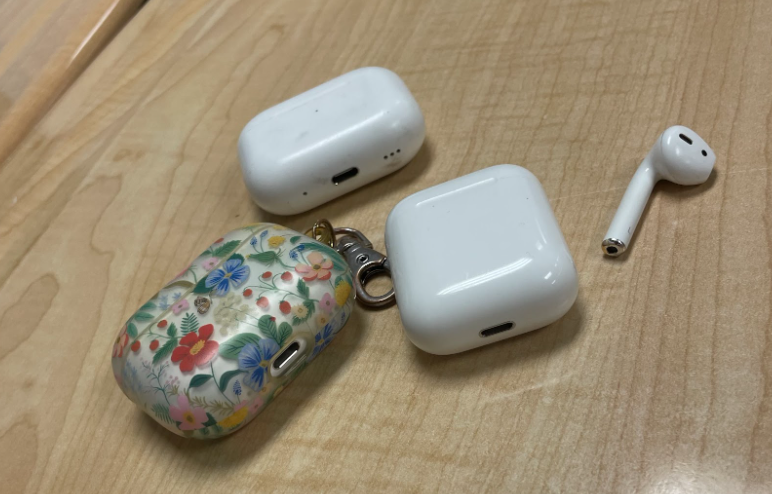You find yourself in what seems to be the longest-lasting block class ever. You’ve finished the in-class work your teacher assigned, and now you’re left staring at the wall with 40 minutes left to go. You glance over at a classmate with long, luxurious hair. For a split second, as she turns her head, you see a flash of a white wireless earbud before it’s quickly hidden again by a curtain of hair.
This scenario isn’t unique; it’s happening daily in classrooms across our school. It’s creating a sense of unfairness among students who feel controlled by rules that seem to be applied unevenly.
“I have my AirPods in every class because my hair can cover them,” Lily Gonzalez, junior, said. “Everyone who has long hair is gonna take advantage of it.”
She’s not wrong. Many students are discreetly using their earbuds during lessons, while those with shorter hairstyles are immediately spotted and told by teachers to put them away.
But this practice makes you wonder: are AirPods the real problem to begin with? Well, yes and no. Teachers need to make sure all students are engaged in the class; this is what the school enforces. Arrowhead has noticed an increase in cell phone usage and wireless earbuds and has enforced very strict rules against communication devices during class. This results in teachers doing their job and enforcing these rules, as they can get in trouble if they get caught ignoring the school’s policies. But if students can actively listen to music while still completing their work accurately and on time, where is the harm? Research on the effects of music suggests there can be benefits. A study from Cambridge University, cited by the Daily Mail, indicated that hip-hop music can provide an uplifting effect on its listeners. The researchers found that the creative act of freestyling triggers “parts of the brain responsible for emotion, language, motivation, and motor processing.” If music can have such a positive neurological impact, why are schools so intent on blocking it out?
Consider this perspective. If you’re trying to get someone’s attention and it takes multiple attempts, you might assume they have trouble hearing. But if you then discover they were wearing wireless headphones, you’d immediately blame the device for their inattention. This is the core of the issue in schools. When teachers notice a correlation between headphone use and failing grades, they often treat the headphones as the primary cause of the problem. However, the real issue might not be the rules themselves, but the students’ choice of when and how to use the technology. The current “long-hair loophole” doesn’t solve this; it just means the rule is only enforced against some students, making the policy feel arbitrary and unfair instead of focused on genuine learning.






